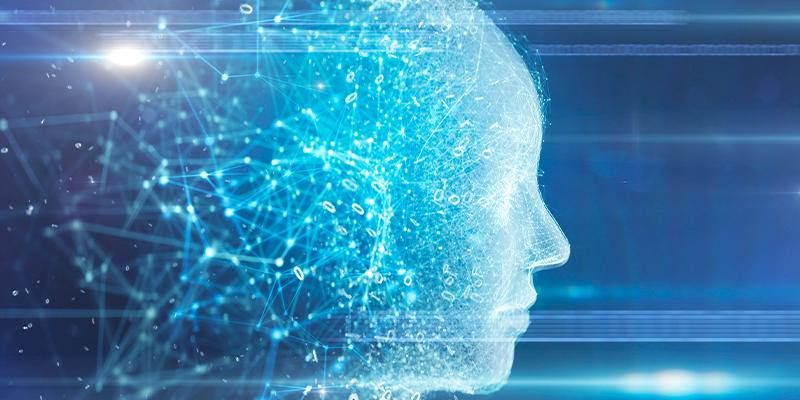When you think of artificial intelligence (AI), what do you envision? A glowing red eye from 2001: A Space Odyssey, or a humanlike Ava from Ex Machina?
For decades, pop culture and science fiction have conspired depictions comprising inspired images of machine-ruled futures and robots accomplishing incredible tasks for human beings. The pictures painted by them are primarily futuristic and incredibly independent. That lays a powerful impression on people. So much so that it can be overwhelming and misleading at times.
People who use Hollywood as a lens to comprehend this transformative technology reckon AI as only a concept, something that’s the thing of the future or that’s going to happen tomorrow. The reality, however, is otherwise.
Artificial intelligence is already an important segment of our lives. It’s everywhere, from smartphones, laptops to cars. Chatbots and virtual assistants, the by-products of AI are using AI-based algorithms to make life better.
AI has disrupted the consciousness of every industry. While AI can help health care service providers with better tools for early diagnostics, financial organizations can leverage AI-based automation and fraud detection to deliver maximum value to their customers. In the same token, logistics can use AI to facilitate better inventory and delivery management and retail can map consumer behavior using AI.
Organizations worldwide are using AI to predict consumer behaviour and gain a competitive edge. But, just like any other technology, AI also functions within some constraints.
Leonard D’Avolio, co-founder of Cyft and an assistant professor at Harvard Medical School and Brigham & Women’s Hospital, pinpointed various misconceptions around AI. He argued that it’s not a magic bullet and needs discernment for desired results. “It’s a tool, not a sentient being,” he said. “If you can’t match the tool to the job, then you can’t get the job done. I have a hammer, [but] that board needs cutting so get out of here with that hammer, that tool’s no good to me.”
Ergo, considering AI almighty can be counterproductive and damaging. The key is to understand how AI works and where its limitations lie.
“Business leaders are often confused about what AI can do for their enterprise. This is understandable, as there are many definitions and variants of AI present in the general discourse,” says Alexander Linden, vice president analyst, Gartner.
However, with AI rapidly disrupting the business environment, it is important to fully understand how AI can create value – and where it cannot. In other words, industry leaders must have a realistic opinion about AI, unravel what it can and can’t do so that they can lead their organizations to apply AI in solving real-world problems and transform their businesses.
Here are common myths and misconceptions about AI.

Myth No 1: AI and Human Brain Are Interchangeable
Organizations today are trying to understand AI, a computer engineering discipline, and how their businesses can benefit from it. AI comprises tools that help companies solve many problems. While some forms of AI might be extremely useful, it is impractical to suggest that it’s equivalent to human intelligence.
Although machine learning, a category of AI — imitates the human brain, there is a huge difference. Machine learning algorithms are susceptible to changes happening in the business landscape. This impacts the level of precision and the value such algorithms can create, proving to be useless or even lead to dangerous decisions over time. For example, image recognition technology is accurate than most humans but fails when it comes to resolving a math problem. AI-powered technologies are meant to solve one task remarkably well, but it fails if the condition changes only a bit.
Unlike the human brain, these algorithms can easily be misled in making incorrect decisions, adding the risk of cybersecurity breaches.
Myth No 2: The Objectivity of AI is Exceedingly Good
AI technology is based on data, rules, and a plethora of kinds of inputs from humans. Now, since humans are bound to be biased on an intrinsic level, AI is too.
The prevailing “predictive analytics” solutions make use of statistical models which, in turn, uses historical data. It works on a pre-set bias that assumes the future will follow the past. But, this isn’t true. Clearly, misleading historical data can disturb the results.
Systems that use social media data are also more vulnerable to bias or intentional malevolent influences.
Though removing bias completely, at the moment, is not possible, efforts can be made to reduce it. Organizations can incorporate AI systems architecture which relies on fewer data and less supervision by humans. Not to mention, diversity in teams working with AI can be increased, and so team members can review each other’s work. Adding such simple steps can significantly reduce selection and confirmation bias.
Even if an organizations’ current AI strategy is ‘no AI’, this should be a conscious decision that must be contingent on research and consideration. Plus, the strategy should be periodically revisited and changed according to the organization’s needs.
Myth No 3: My Business Can Perform without an AI strategy
It is foundational for every organization to tap into the potential of AI and find out how this technology can be leveraged to business problems. They need to formulate a strategy and see where AI-assisted technologies can be implemented. For example, if problems occur while mapping big data, then AI data mapping mechanisms can be incredible use. Incorporating AI mapping can empower business users create intelligent mappings, thus speeding up data transformations and ultimately decision-making. In many ways, avoiding AI can hamper companies’ transformational journey, and could place enterprises at a competitive disadvantage.
Myth no 4: Intelligent Systems Learn by Themselves
Machine learning solutions give the impression that they can learn by themselves. However, in reality, human data scientists have a lot to do. They frame the problem, execute data preparation, recognize datasets, get rid of potential bias in the training data (see myth No. 2) and, most importantly, regularly update the software to facilitate new data integrations.






























